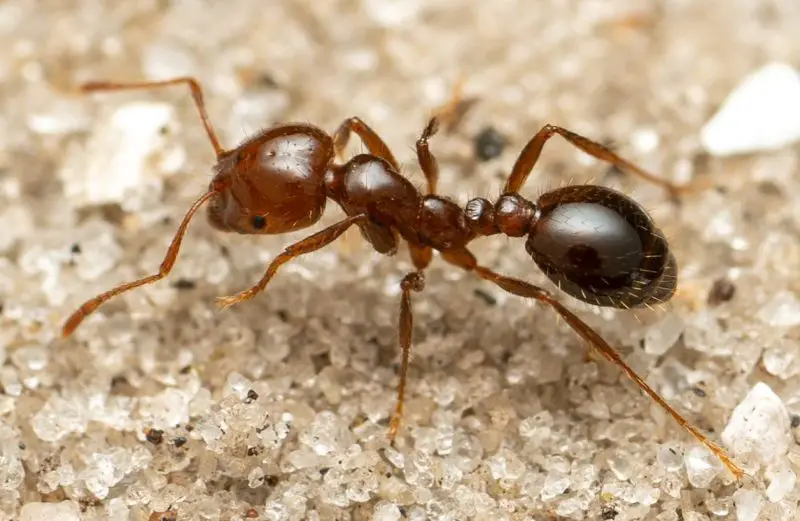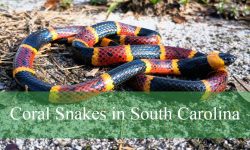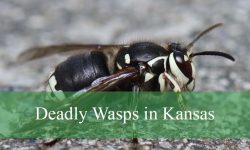Fire ants are a familiar presence throughout Mississippi’s yards, neighborhoods, farms, and natural landscapes. Their reddish appearance, dome-shaped mounds, and painful stings have made them one of the most impactful invasive insects in the state. Yet despite their visibility, many Mississippians still misunderstand what fire ants are capable of, how their colonies operate, and why they spread so aggressively across the South.
Mississippi’s warm climate, humidity, soft soils, and long warm seasons create near-perfect conditions for imported fire ants to thrive. Their colonies expand rapidly during spring and fall, and even a small yard can host multiple interconnected nests. For people and pets, fire ants can pose real risks—not only through their venomous stings but also through the way their colonies interact with the surrounding environment.
Below are eight detailed fire ant facts that reveal how these insects influence Mississippi homes, pets, safety, and ecosystems.
1. Fire Ant Stings Deliver a Venom That Causes Burning, Blistering, and Allergic Reactions

Fire Ant Stings Inject an Alkaloid Venom
When a fire ant stings, it delivers a venom rich in alkaloids that produce a sharp burning sensation almost immediately. This chemical blend is designed to break down soft tissue, which is why affected skin develops a small, raised pustule several hours after the sting. These pustules are unique to fire ant venom and persist for days, often becoming itchy as they dry. In Mississippi’s warm, humid climate, scratching can easily lead to secondary infections or lasting marks, making proper care essential.
The sting mechanism is fast and deliberate, allowing each ant to deliver multiple stings in seconds. Even a brief disturbance of a mound can result in dozens of ants swarming and injecting venom simultaneously, which intensifies the overall pain and irritation.
Fire Ants Bite First to Secure Their Grip
Before a fire ant injects venom, it anchors itself to the skin using its mandibles. This bite is not meant to hurt—it stabilizes the ant so it can rotate its abdomen and jab repeatedly. This pivoting motion creates the recognizable semicircular or clustered sting patterns that many Mississippians notice after accidental contact. Because ants attach firmly, brushing them off can be difficult, and attempts to swat them away often lead to even more stings.
The coordinated attack behavior of multiple ants dramatically increases the reaction. What begins as a single ant quickly becomes a group acting almost simultaneously, which is why stepping into a mound can be overwhelming.
Some People Experience Severe Allergic Responses
Most people develop only localized redness or swelling, but a small percentage may experience more serious symptoms. These can include hives, nausea, dizziness, swelling of the lips or throat, or difficulty breathing. Individuals with insect-sting allergies should be cautious, as fire ant venom can trigger anaphylaxis.
Pets are equally vulnerable. Dogs exploring yards or fields may step on mounds without noticing and receive dozens of stings around their sensitive paws, noses, and mouths. Repeated stings can lead to swelling, pain, and in severe cases, dangerous systemic reactions. Immediate medical or veterinary attention is recommended whenever severe symptoms appear.
2. Fire Ant Colonies in Mississippi Can Contain Multiple Queens and Explosive Population Growth
Multi-Queen Colonies Expand Faster
Many fire ant colonies in Mississippi are polygyne, meaning they support multiple egg-laying queens within the same nest. Because each queen produces eggs continuously, these colonies grow much faster than single-queen colonies and reach high densities in a short time. During warm months, a single acre of land can contain dozens of interconnected nests, creating an expansive, cooperative super-colony that spreads quietly beneath the soil.
A colony with multiple queens can double its worker population within a single season, especially during Mississippi’s long growing periods.
Colony Budding Helps Them Spread
Fire ants spread not only through mating flights but also through budding—a process where a queen and a group of workers split off from the main colony to establish a new nest nearby. This allows fire ants to expand yard by yard, gradually occupying larger areas without being noticed. Budding is especially common after a disturbance, such as lawn mowing or heavy rain, which encourages colonies to relocate and multiply.
Because budding takes place underground or in hidden areas, most homeowners never see the new nests forming until they emerge weeks later.
Soil Type in Mississippi Affects Nest Formation
Mississippi’s variety of soils—clay, loam, and sandy blends—are ideal for fire ant construction. Soft soils allow ants to build large dome-shaped mounds that trap heat and moisture, providing the right environment for developing larvae. Moist areas near rivers, ponds, and low-lying fields support faster brood production, and even small landscaping features like mulch beds or irrigation zones can become ideal nest sites.
Where the soil stays loose and undisturbed, colonies thrive and expand rapidly.
3. Fire Ant Mounds Can Damage Lawns, Crops, and Outdoor Infrastructure
Their Mounds Disrupt Grass and Root Structure
Fire ant mounds push up large amounts of loose soil, smothering grass and interrupting root systems beneath the surface. Over time, patches of lawn may yellow, wilt, or die altogether. Mounds also create uneven terrain that can make mowing difficult and dangerous. In Mississippi neighborhoods and parks, recurring mound clusters can turn large sections of turf into rough, patchy landscapes.
Even after treatment, underground tunnels allow mounds to reform in the same area, making long-term control challenging.
Agricultural Impacts Are Significant
Fire ants pose major problems in Mississippi’s agricultural areas. They interfere with farm equipment, damage crop roots, and can stress young animals. In pastures, their mounds interfere with hay harvesting and machinery operation. Calves resting in tall grass may be attacked before they can escape, and farm dogs often encounter the ants while patrolling barns or fields.
For farmers, the combination of equipment complications and animal welfare concerns makes fire ants a persistent problem.
Fire Ants Damage Outdoor Electrical Systems
Fire ants are attracted to electrical currents and frequently invade outdoor outlets, AC units, irrigation controllers, and well pumps. Once inside, they can short out circuits or interfere with mechanical components, causing unexpected failures.
In high-density areas, these electrical damages can become recurring and costly.
4. Fire Ants Form Aggressive Rafts During Mississippi Floods
They Survive Floodwaters by Linking Together
Heavy rains and flooding are common in Mississippi, and fire ants have evolved a striking survival strategy to cope: forming floating rafts. Thousands of ants lock legs and jaws together to create a buoyant platform that protects the queen and developing brood. These rafts can float for days, drifting along creeks, roadside ditches, and floodplains until they reach dry ground.
This behavior allows colonies to survive conditions that would kill many other insects.
Rafts Increase Post-Flood Infestations
Once floodwaters recede, rafts wash up on new areas—yards, parks, farms, and forest edges—allowing colonies to establish nests in locations previously free of fire ants. This explains why Mississippi communities often see a sudden rise in mound numbers after storms or river overflows.
Floods do not reduce fire ant numbers; they often help them spread.
Pets and Wildlife Are at Risk
Curious dogs, cats, and wildlife may approach floating rafts along shorelines. Because the ants move as a single defensive unit, disturbing the raft can result in dozens of stings at once. Small mammals, reptiles, and ground-foraging birds may also be attacked when they encounter stranded rafts.
Rafts significantly increase sting incidents during and after heavy rains.
5. Fire Ants Aggressively Defend Their Mound and Attack in Coordinated Groups
Defense Behavior Is Highly Organized
When a mound is disturbed, fire ants respond almost instantly. Vibrations in the soil alert the workers, who surge to the surface in seconds. Their coordinated response overwhelms intruders quickly. Even slight pressure—such as a footstep, a lawn tool, or a pet’s paw—can trigger an attack.
The speed and synchronization of their defense make fire ants particularly dangerous in high-traffic outdoor spaces.
Pets Are Particularly Vulnerable
Dogs and cats often step on mounds without noticing them. Because ants cling tightly to fur and sensitive skin, removal is difficult once the attack begins. Multiple stings can cause pain, swelling, and in severe cases, dangerous allergic reactions.
Pet owners must be cautious when walking animals near fields, wooded edges, or tall grass.
Children Are at Higher Risk During Outdoor Play
Children exploring backyards, parks, or trails may accidentally disturb a mound. Because fire ants move quickly, a child may receive many stings before realizing what is happening. Quick removal of clothing, washing the area, and monitoring symptoms are essential steps after contact.
In heavily infested areas, supervision is important during outdoor play.
6. Fire Ants Prey on and Displace Native Insects and Small Animals
They Attack Ground-Nesting Wildlife
Fire ants are opportunistic predators. They target eggs, hatchlings, and young animals in ground nests. In Mississippi’s pine forests and grasslands, fire ants have reduced populations of several native species, especially those that nest on or near the ground.
Their impact extends beyond insects and affects broader wildlife communities.
They Outcompete Native Ant Species
Native ants are essential for seed dispersal, soil aeration, and ecological balance. However, fire ants are faster, more aggressive, and present in far larger numbers. Their presence pushes native ants out of their habitats, reducing biodiversity and altering natural food webs.
Where fire ants dominate, native ants decline sharply.
They Disrupt Soil Invertebrate Communities
Fire ants feed on worms, beetle larvae, and other invertebrates that help maintain healthy soil. This reduces decomposition rates and affects soil structure, indirectly influencing gardens, crops, and forest ecosystems.
Their presence reshapes Mississippi’s soil ecology at multiple levels.
7. Fire Ant Stings Pose Real Risks to Pets, Livestock, and Sensitive Individuals
Pets Are Often Stung on Their Paws and Faces
Dogs frequently encounter fire ants while sniffing or stepping on mounds. Stings around the paws or nose are especially painful and can lead to excessive licking, swelling, or infection. In some cases, dogs may experience vomiting or breathing difficulties after multiple stings.
Pet owners should check paws and snouts after outdoor activities.
Livestock Can Be Affected During Grazing
Young calves, goats, and foals resting in grass may be stung before they can escape. Fire ants are drawn to injured or weakened animals as well, complicating recovery.
Mississippi ranchers often monitor high-risk areas during peak ant activity.
Allergic Individuals Face Higher Risks
For people with insect-sting allergies, even a small number of stings can trigger severe reactions. Symptoms may escalate quickly, making prompt medical attention crucial.
Allergic reactions are a serious concern in areas with dense fire ant populations.
8. Fire Ant Control in Mississippi Requires Repeated, Integrated Strategies
Single Treatments Rarely Solve the Problem
Treating one mound does not eliminate the colony. Because fire ants spread through budding and maintain underground networks, new mounds can appear days or weeks later. Consistency is essential for meaningful control.
Long-term management is more effective than one-time efforts.
Broadcast Baits Are More Effective Than Single-Mound Treatments
Broadcasting bait across the entire yard targets multiple hidden colonies at once. These baits disrupt the ants’ ability to produce new workers and can gradually reduce population levels.
Most experts recommend several applications per year.
Environmental Conditions Impact Treatment Success
Fire ants forage most actively in warm weather, making spring and fall ideal treatment times. Heavy rain can wash away bait, while extreme heat slows collection. Because Mississippi’s climate varies by season, timing influences success significantly.
Correct timing is just as important as the product used.
FAQs About Fire Ants in Mississippi
How dangerous are fire ants in Mississippi?
They can inflict painful stings and allergic reactions, especially for pets and sensitive individuals.
Where are fire ants most common?
Lawns, parks, pastures, agricultural fields, and suburban neighborhoods across Mississippi.
Do fire ants sting pets?
Yes. Dogs and cats can suffer multiple stings if they disturb a mound.
Why do fire ant stings form white pustules?
The pustules result from alkaloid venom causing localized necrosis.
Do fire ants die after stinging?
No. Unlike bees, fire ants can sting repeatedly.
How do I remove fire ants from my yard?
Use broadcast bait treatments and repeat every season.
Do floods spread fire ants?
Yes. Floating fire ant rafts can colonize new areas after flooding.
Conclusion
Fire ants in Mississippi have become one of the state’s most impactful invasive insects, influencing daily life, outdoor safety, agriculture, and pet well-being. Their venomous stings, aggressive colony behavior, and rapid reproduction allow them to thrive across a wide range of Mississippi landscapes. Although they are difficult to eliminate completely, understanding how fire ants behave—and how they spread—helps residents protect their homes, yards, livestock, and pets more effectively.
Learning the facts behind their biology and behavior allows Mississippians to respond with informed strategies rather than fear, ensuring safer interactions with one of the South’s most persistent and challenging pests.






